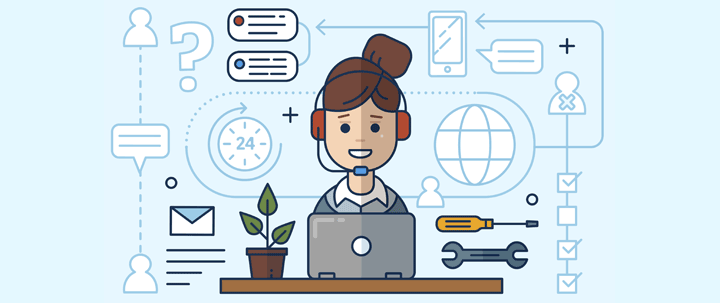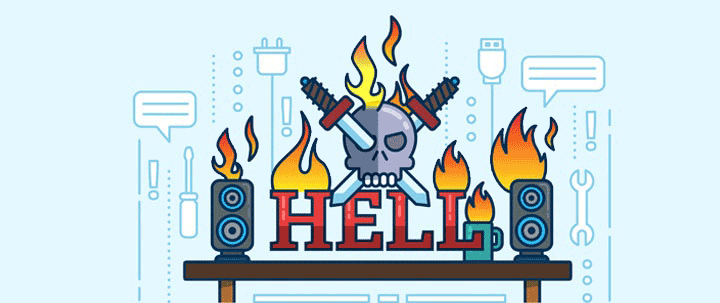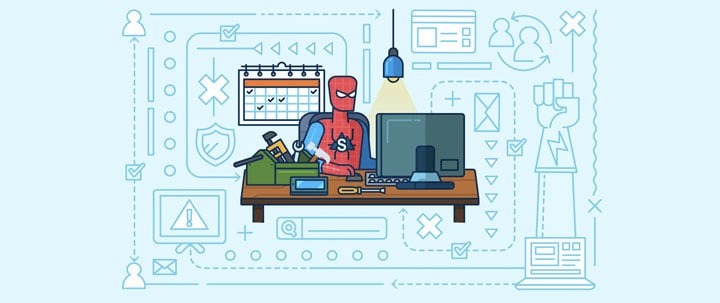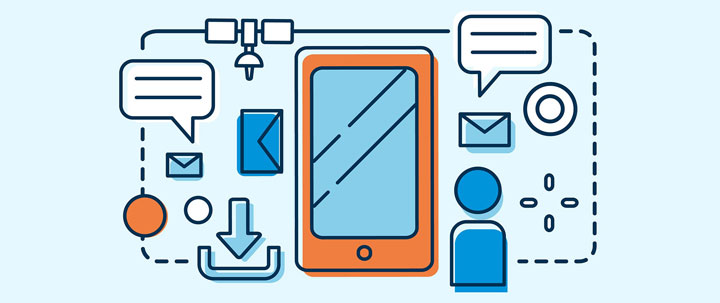By Jessy Smulski
IT Helpdesk professionals are like company counselors. They manage the stress of others, coach people through problems, and occasionally talk people off the technology ledge. It’s fulfilling work, but every once in a while, they are faced with a caller that is so difficult that the conversation makes them question their career choices and, frankly, all of humanity.
To help you understand the emotions behind these customer behaviors and become a master of psychology, try using these five communication tips on your next difficult caller:
1. Practice Reflective Listening
Don’t: route an angry or frustrated customer to someone else without fully understanding the problem. This will escalate stress and trigger screamers, demanders, and threat-makers. Your job is to navigate around customer emotions to find out as much information about the problem as possible.
Do: listen carefully and restate the customer’s concerns back to them to validate that you fully grasp the situation.
For example:
My understanding is that you tried to log into your account, but your password was incorrect, and now you are locked out. Am I interpreting this correctly?
If they say “Yes” — move on.
If they say “No” — ask them to tell you more.
Some Different Types Of Difficult Callers

The Screamer
Aggressive
Loud
Profane
Impulsive

The Rambler
Confused
Uncertain
Bad Listener
Egotistical

The Demander
Stressed
Impatient
Blunt
Motivated by Value

The Threat-Maker
Critical
Rude
Irrational
Hierarchical
2. Consider Their 'Affect Heuristic'
Don’t: lose patience when a customer rambles, resists, and prevents you from making progress. The 'affect heuristic' is how someone feels about something based on their world views (a.k.a their bias). When a customer’s affect heuristic is at play, objective facts are blanketed by hardwired opinions that often present as skepticism and a lot of rambling.
Do: interrupt politely, communicate how much you value their time, and take control over the conversation using statements like:
Pardon my interruption; I just want to make sure I understand you correctly. I don’t want to take up any more of your time...
Can you help me understand why you feel [emotion] about [situation]?
3. Let the Customer Vent
Don’t: speak apprehensively in response to an expressly angry or dissatisfied customer. Especially when faced with a screamer or threat-maker, fear triggers our fight or flight response — neither of which serves us well at work.
Do: let the customer vent for a moment before using empathy and decisive action to diffuse heightened emotions.
For example:
I’m sorry that you feel this way, Mr. Smith. I would be frustrated, too.
Thank you so much for letting us know about this issue.

Here’s what I can do right now to help.
If the customer becomes profane and uncontainable, remain calm and reply with statements such as:
Let’s pause for a moment and regroup so that I can get you a solution as fast as possible.
Would it be easier for you if we worked out this problem through email or private chat?
4. Play Doctor
Don’t: personalize anxiety and frustration when a customer is dealing with a mission-critical issue. If a customer’s business is hemorrhaging money, their negative emotions are driven by anxiety (not you). This customer won’t hesitate to make demands or threats if it means stopping the bleeding.
Do: keep the customer calm and use an integrated ticket management system to collect vital diagnostic data and triage the situation quickly. Vitals are immediately sent to the helpdesk and processed, before routing the customer to the right queue or technician for fast resolution.
5. Have an Informed Conversation
Don’t: ask the customer the same questions they've already answered in prior support calls or tickets. Having to explain a problem repeatedly is a surefire way to take a customer from composed to callous.
Do: integrate knowledgebase software into your ticket management system to track the history of a customer’s relationship with the helpdesk. Greater visibility into past and present problems will help you cut to the chase and act fast. Knowledgebase software also keeps the customer connected and up-to-date on progress via a personalized customer portal that includes chatbot, ticketing, and automated responses to questions.



%201.png?width=559&height=559&name=close-up-women-working-with-devices%20(1)%201.png)








